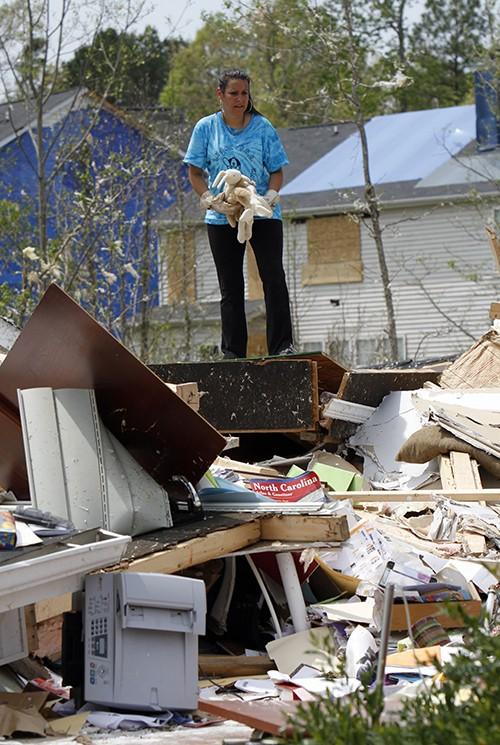ST. LOUIS — The National Weather Service reports that the storm that ripped through the St. Louis region Friday was the worst it has seen in more than 40 years.
The last time the area saw such severe and widespread damage was on Jan. 24., 1967, when a tornado traveled 21 miles across St. Louis County following an eerily similar path.
That was the fourth-worst tornado in history to hit the St. Louis metropolitan area, according to the weather service.
“”People are going to remember this for a long time,”” said Jim Sieveking, the lead forecaster at the National Weather Service in St. Louis.
A storm path producing tornadoes on Friday traveled from Maryland Heights all the way across the Mississippi River to Granite City, leaving destroyed homes, fallen trees and downed wires in its wake.
Its path was only about five to 10 miles off from the tornado of 1967, Sieveking said.
Lambert-St. Louis International Airport, smack in the middle of that path, was hit hard, losing part of its roof and seeing its windows shattered throughout the main terminal. There were multiple injuries, none serious. The airport was closed down and officials are working to have it reopened by Sunday.
The weather service has confirmed tornadoes touched down in New Melle, Maryland Heights and Granite City. Survey teams are out inspecting the damage, to confirm suspected tornadoes elsewhere along that storm route.
Sieveking said they will be looking for the telltale signs: convergent patterns in the damage, twisting and turning of the tree limbs, houses removed from their foundations.
He said forecasters are confident the tornado touched down in Maryland Heights, Bridgeton and Edmundson because at those points they were actually picking up on their weather radars the debris that was swirling through the tornadoes.
This storm was far worse than the one that hammered Sunset Hills on New Year’s Eve, he said. The tornadoes then were from a squall line thunderstorm. Squall lines are famous for their damaging winds but don’t usually produce tornadoes — and when they do, they are short-lived, he said.
Friday was a supercell thunderstorm, known for producing long-path tornadoes, hail and damaging winds.









